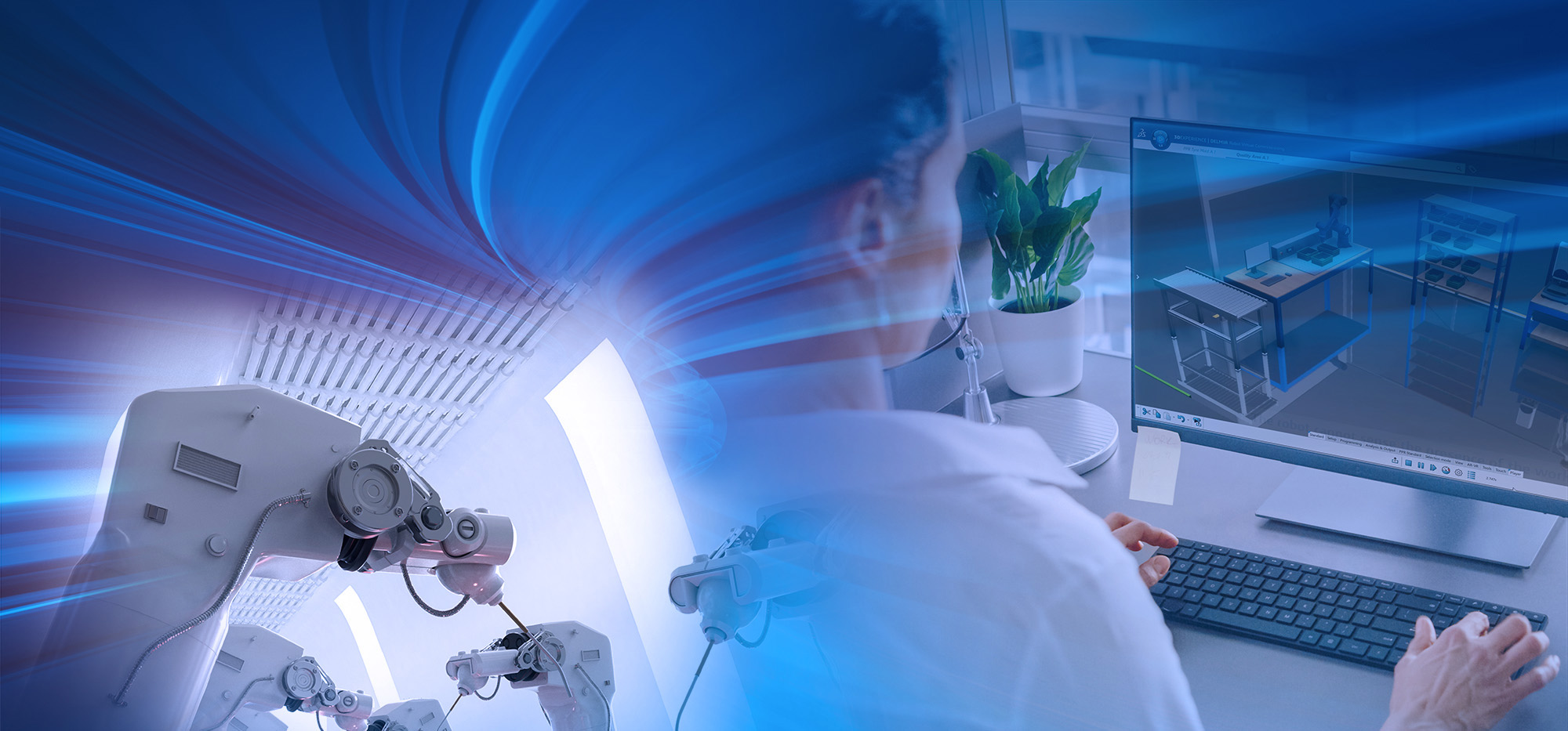Plan, visualize, capitalize on maintenance processes
Getting real data from robots running in a line is vital for robotics startups who do not have years of field experience behind them. These data will allow them to generate predictive maintenance processes and build an effective continuous improvement loop. To do so, robot providers need to invest in solutions that can help them detect issues early in every lifecycle phase, accurately diagnose the cause, determine actions as well as share lessons learned with relevant stakeholders.
Plan, Visualize, Capitalize on Maintenance processes
Preventing unexpected technical breakdowns is critical for manufacturing companies, as these can cause disruptions, costly downtimes, injuries and even fatalities. Industrial robot providers also risk damaging their reputation if they are unable to prevent these breakdowns.
A dedicated maintenance process can streamline maintenance activities by centralizing all relevant information in a single platform. This can include defining which parts are replaceable or repairable and using this information for effective inventory management and maintenance workflows. By enriching this information and making it easily accessible to all relevant parties, it is possible to act quickly and effectively in the event of any issues or disruptions.
To ensure that maintenance processes are accessible anytime, anywhere, it is important to have a clear view of the parts and tools that will be needed for each step of the maintenance process. This can be achieved through the use of a service bill of materials (sBOM), which can provide a comprehensive view of an asset's service material requirements. By linking each step in the maintenance process to a specific item in the sBOM, operators will know exactly what they need in order to complete each task.
Adopt predictive maintenance
Unlock the full potential of predictive maintenance
Organizations are realizing the value of Predictive Maintenance. Discover the key to unlock its full potential and follow proven strategies towards a successful implementation.
Predictive maintenance is a model that provides better visibility for decision-makers to predict when an asset needs maintenance, allowing for servicing to be executed when it is required. This can exponentially reduce downtime and maintenance costs in comparison to reactive or preventive maintenance models. However, predictive maintenance relies on large amounts of up-to-date and real-time data to produce meaningful and actionable recommendations.
To realize the full potential of predictive maintenance, companies can turn to the 3DEXPERIENCE platform on the cloud to ensure that analyzed data is fed to a predictive maintenance system anytime, anywhere. Additionally, the expertise and experience of technicians can be used to improve maintenance practices and ensure that they are effectively capitalized and re-used across the enterprise. Predictive maintenance can help to optimize these practices and improve efficiency and reliability.
For robotics startups, data is crucial
Asset quality intelligence is a crucial aspect of the maintenance process, as it helps to ensure that assets are functioning optimally and reliably. By monitoring the quality and performance of assets, it is possible to identify potential issues before they become critical and to take preventative measures to avoid downtime and costly repairs. Data allows companies to gather detailed information about the running of their assets and to develop and deploy predictive maintenance practices.
Support offerings are becoming increasingly important for robotics providers to ensure customer retention and satisfaction. However, collecting quality-related data can be a real challenge, particularly when information is scattered between teams, disciplines, and companies, and is not connected or contextualized. When this data is collected and processed, it can be shared with suppliers and used to improve the next generation of products.
The 3DEXPERIENCE platform on the cloud allows for a continuous feedback loop, enabling uninterrupted improvement in product quality and asset performance. By leveraging the platform, companies can optimize their maintenance processes and drive operational excellence.
The Rise of Robot-as-a-Service
The robotics market is witnessing a significant shift towards service-based business models, such as Robot-as-a-Service (RaaS), which revolutionizes the economics of robotics and enhances service excellence for manufacturers and customers alike. In the RaaS model, manufacturers offer robots to customers on a subscription or pay-per-use basis, providing comprehensive service and maintenance to ensure maximum uptime and operational efficiency.
This model not only opens new revenue streams for manufacturers but also eliminates the need for customers to make significant upfront investments in robot ownership. By opting for RaaS, customers benefit from improved service outcomes and better maintenance, leading to enhanced robot functionality and prolonged lifespan. Many robotics companies, including startups and established players, are embracing RaaS to stay competitive and offer customers flexible, cost-effective solutions for automation.
Learn more
Ready to learn more?
See how the 3DEXPERIENCE platform on the cloud can transform the way you design and produce your robots.
